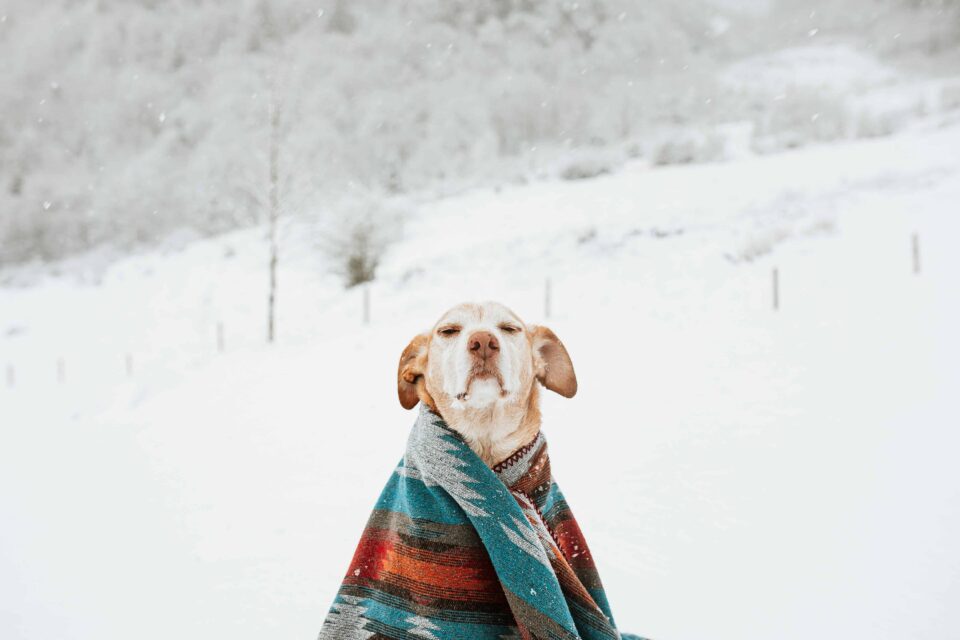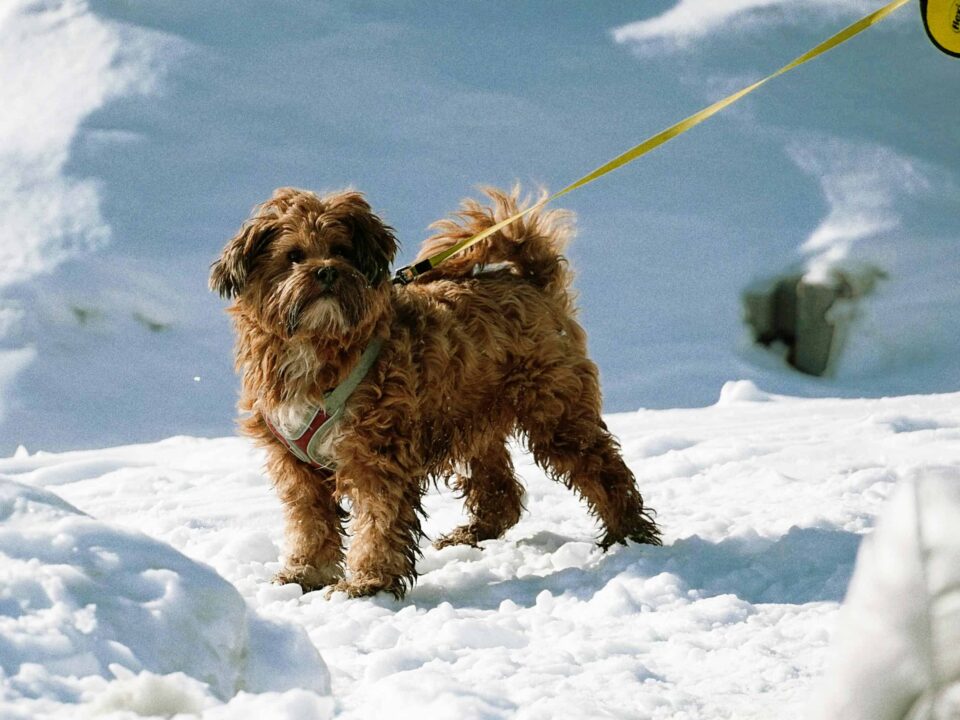Cold Safety: How Long Can Dogs Be In Snow?
Dogs love playing in the snow, but cold temperatures can be risky. Their tolerance depends on their breed, coat type, and overall health. Some dogs enjoy winter activities, while others struggle with the cold. Knowing when to bring them inside helps prevent discomfort and potential health issues.
Key Takeaways
- Dogs tolerate cold differently based on breed and coat type.
- Small, short-haired dogs get cold faster than larger, double-coated breeds.
- Frostbite and hypothermia are risks in extreme cold.
- Short play sessions prevent overexposure to freezing temperatures.
- Proper gear like boots and coats helps keep dogs warm.
Understanding Your Dog’s Cold Tolerance
Not all dogs handle cold the same way. Large breeds with thick fur, like Huskies, tolerate snow better than small or short-haired dogs. Size, coat density, and body fat all play a role in how long they can stay outside.
Older dogs, puppies, and those with medical conditions may struggle in the cold. Keep an eye on how they react. If they shiver, lift their paws, or try to go inside, it’s time to bring them in.
How Long Can Dogs Safely Stay in the Snow?
Most dogs can handle short periods outside in cold weather. If it’s above freezing, healthy dogs can usually play for 30 to 60 minutes. In colder temperatures, limit their time to 10–20 minutes, especially for small or short-haired breeds.
Wind chill, dampness, and extreme cold can shorten safe outdoor time. If the temperature drops below 20°F, most dogs should only be out for a few minutes. Watch for signs of discomfort and bring them inside as needed.
Related: Can You Wash a Dog With Dawn? Safe and Recommended Techniques
Recognizing Signs of Cold Stress
Dogs can’t tell you when they’re too cold, so watch their body language. Shivering, whining, or lifting paws are clear signs they’re uncomfortable. If they start slowing down or looking for shelter, they need to come inside.
Hypothermia and frostbite are real dangers in extreme cold. If your pet’s paws gets frostbite, they may limp, lick their paws, or show signs of pain. Check their ears, tail, and feet for pale or bluish skin, which can indicate frostbite.

Dressing Your Dog for Cold Weather
Dog coats and sweaters help retain body heat, especially for short-haired breeds. Look for insulated options that cover their chest and back. If it’s wet outside, a waterproof layer helps keep them dry.
Boots protect paws from ice, salt, and cold surfaces. Some dogs resist wearing them at first, but they can prevent injuries. If your dog refuses boots, paw balm can help protect their feet from cracks and irritation.
Related: 3-in-1 Paw Ointment for Dogs
Best Ways to Keep Your Dog Warm and Safe
Limit time outside when it’s very cold, and always dry your dog off when they come in. Snow and ice can stick to their fur, making them colder. Keep their paws clean to remove ice, salt, and chemicals that could cause irritation.
Offer a warm, cozy spot indoors with soft blankets. Some dogs appreciate heated beds, especially smaller or older pets. If your home is drafty, a dog sweater indoors can help keep them comfortable.
Safe Outdoor Activities in the Snow
Snowy playtime can be fun if done safely. Playing fetch, running in the snow, or short walks can keep dogs active without overexposure. Always supervise your dog and keep play sessions brief in freezing temperatures.
Some dogs love rolling in the snow, while others avoid it. Pay attention to how your dog reacts and adjust outdoor time based on their comfort level. If they stop playing and try to go inside, follow their lead.
Protecting Paws from Cold Surfaces
Snow, ice, and salt can be tough on paws. Always check for ice buildup between toes, as it can cause discomfort. If your dog’s paws crack or dry out, use a moisturizing balm to soothe irritation.
After walks, wipe paws clean to remove salt and chemicals. This helps prevent them from licking harmful substances. Regular paw care is key during winter to avoid injury.
Keeping Your Dog Hydrated in Cold Weather
Dogs still need plenty of water in winter, even if they don’t seem as thirsty. Cold air can dry them out, and snow isn’t a good substitute for fresh water. Always provide a bowl of clean water inside after outdoor play.
If you’re outside for a while, bring a portable water bowl. Dehydration can make dogs more sensitive to the cold, so regular water breaks are important.

When to Bring Your Dog Inside
If temperatures drop below freezing, most dogs shouldn’t be outside for long. If your dog shivers, slows down, or seems uncomfortable, it’s time to warm up. Some dogs want to stay out longer, but it’s best to limit their time in extreme cold.
Puppies, seniors, and small dogs are more sensitive to cold. If they show signs of discomfort quickly, bring them in sooner. Always err on the side of caution when it comes to cold weather safety.
How Cold is Too Cold for Your Dog?
Every dog has a different cold tolerance. A Husky might enjoy playing in the snow, while a Chihuahua struggles in anything below 40°F. Pay attention to your dog’s breed, size, and coat type when deciding how long they can stay outside.
Wondering exactly how cold is too cold for your dog? A good rule of thumb: if it’s too cold for you, it’s probably too cold for them. Wind chill, wet conditions, and overall temperature all affect how comfortable they’ll be.
How Long Can Your Dog Play in the Snow?
Snow play can be fun, but too much exposure leads to discomfort. Most dogs can safely enjoy snow for 20–30 minutes in mild cold. If it’s freezing, limit playtime to 10 minutes or less.
If you’re unsure how long can my dog be outside? check on them frequently. If they seem cold, bring them inside to warm up before heading out again.
Caring for Your Dog During Winter
Winter brings unique challenges, but simple steps can keep your dog safe. Dry them off after outdoor time, provide warm indoor spaces, and limit exposure in freezing temperatures. If you need more tips on how to care for your dog during winter months, check out expert advice on cold weather care.
A little extra attention goes a long way in making sure your dog stays happy and healthy all season. Keep an eye on their behavior, and adjust their time outdoors based on how they respond to the cold.
Keep Your Pup Warm and Safe This Winter
Cold weather can be tough on dogs, but the right precautions help them stay comfortable. Pay attention to their body language, use protective gear, and adjust outdoor time based on the temperature. If you’re not sure how to keep your pup warm and safe, focus on limiting cold exposure and providing a warm indoor space.
Want to give your dog extra protection this winter? Try DermaSkin Ointment for Dogs to soothe dry, irritated skin and keep them comfortable in cold weather.
~Veterinarian Recommended